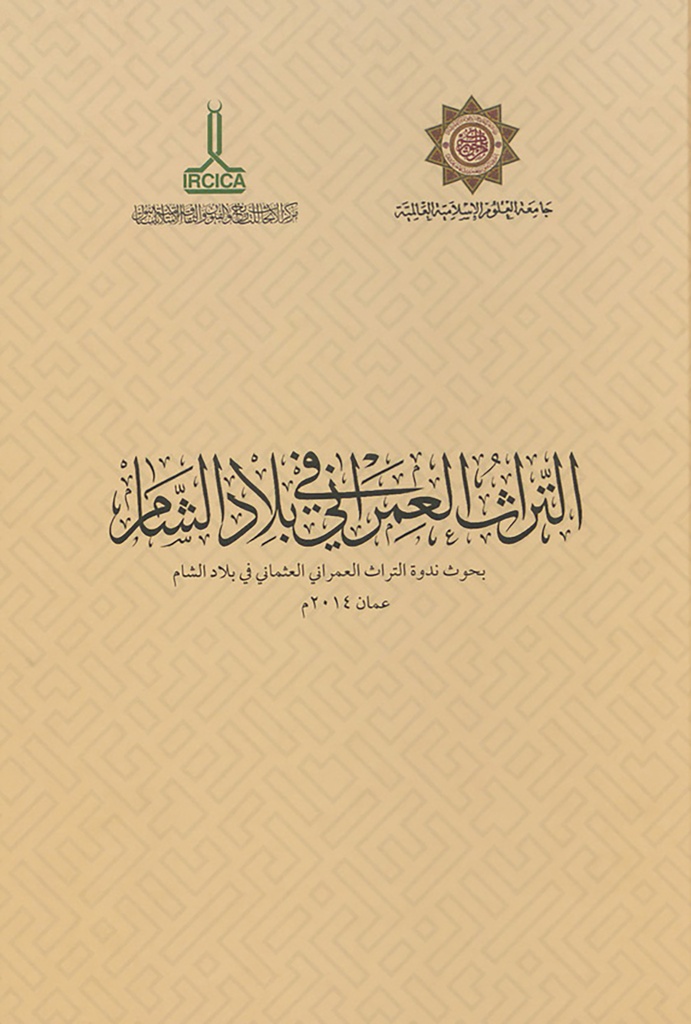Biladü’ş-Şam’da Şehir Mirası
Biladü’ş-Şam’da Osmanlı Şehir Mirası Uluslararası Sempozyumu Bildirileri Amman, 2014
Müslüman Ülkeler Tarihi Serisi 7, 482 + 58 s.
IRCICA, İstanbul, 2018
Metin: Arapça, Türkçe
ISBN: 9789290633181
This is a collection of the papers that were presented at the symposium co-organized by IRCICA under the patronage of the Ministry of Culture of the Hashemite Kingdom of Jordan and jointly with World Islamic Science and Education University (WISE University), in Amman, on 3-5 March 2014. Scholars and researchers from Bosnia and Herzegovina, Egypt, Iraq, Italy, Lebanon, Jordan, Palestine, Saudi Arabia, Sweden, Syria and Turkey participated in the symposium.
Bilad al-Sham saw important urban and infrastructural developments throughout the Ottoman period. The numerous monuments spread across the region are speaking of the history of administrative and architectural activities conducted and the waqfs (endowments, foundations) established. A number of monuments were built in various parts of Bilad al-Sham by the best architects, including the 16th century chief architect and civil engineer Mimar Sinan. Those monuments constitute authentic references for the study of administrative, urban, architectural and artistic developments in the region. The symposium underscored the need to promote research, data collection and publications on these monuments. Seventeen articles, fifteen of them in Arabic, were presented at the symposium. They shed light on aspects such as the political and social factors having influenced the course of urban and architectural developments, the schools and other educational establishments, structures such as fortresses, khans (commercial centers), and markets, contributions of infrastructural and architectural activities to economic and cultural relations between peoples. Studies focusing on major cities and sites were also presented. This collection of papers is a valuable contribution to references on the urban history of Bilad al-Sham.
Bilad al-Sham saw important urban and infrastructural developments throughout the Ottoman period. The numerous monuments spread across the region are speaking of the history of administrative and architectural activities conducted and the waqfs (endowments, foundations) established. A number of monuments were built in various parts of Bilad al-Sham by the best architects, including the 16th century chief architect and civil engineer Mimar Sinan. Those monuments constitute authentic references for the study of administrative, urban, architectural and artistic developments in the region. The symposium underscored the need to promote research, data collection and publications on these monuments. Seventeen articles, fifteen of them in Arabic, were presented at the symposium. They shed light on aspects such as the political and social factors having influenced the course of urban and architectural developments, the schools and other educational establishments, structures such as fortresses, khans (commercial centers), and markets, contributions of infrastructural and architectural activities to economic and cultural relations between peoples. Studies focusing on major cities and sites were also presented. This collection of papers is a valuable contribution to references on the urban history of Bilad al-Sham.



